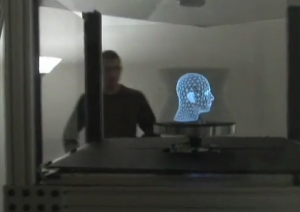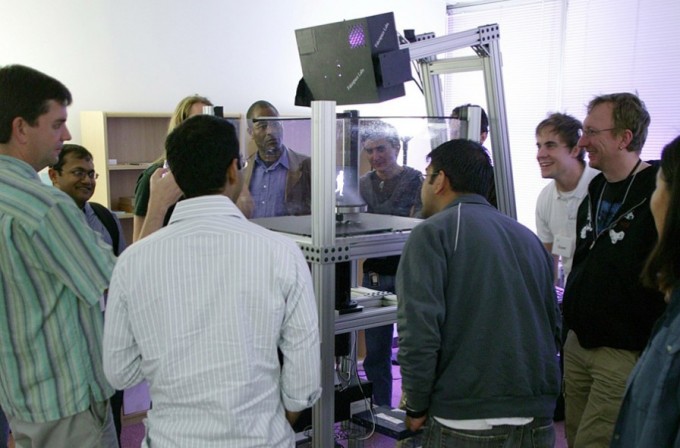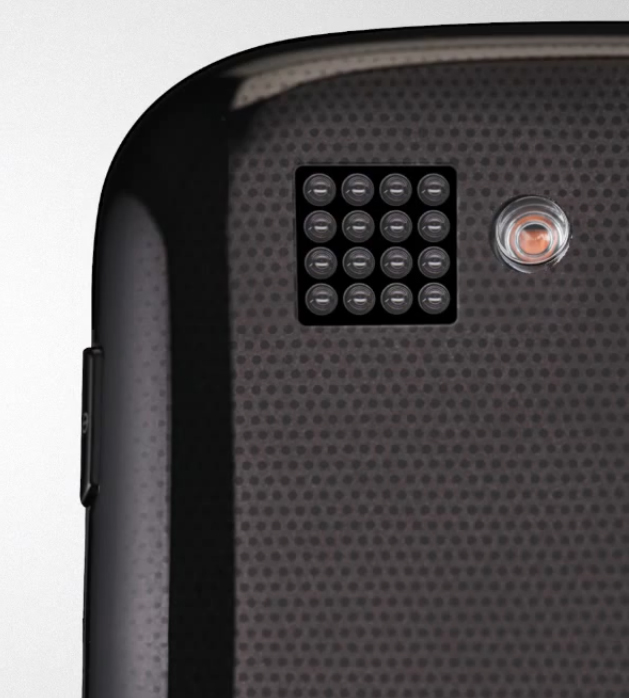LightField Display: 360 degree 3D-rendering
 LightField cameras are used to record the LightField, which is defined as every ray of light in every point of space. In other words: They don’t just capture a two-dimensional representation of one plane, but all the actual light rays that pass through the lense.
LightField cameras are used to record the LightField, which is defined as every ray of light in every point of space. In other words: They don’t just capture a two-dimensional representation of one plane, but all the actual light rays that pass through the lense.
The work of Andrew Jones from the Institute for Creative Technologies (ICT) at the University of Southern California and his colleagues is exactly the opposite: They are working on a display that projects a three-dimensional image into the entire room in order to create a 360 degree 3D-rendering that can be viewed from any point around the display.
To reach that goal, the scientists use a rotating mirror (spin rate: 15-20 kHz) and a digital projector that results in an effective frame-rate of approx. 4300-5800 frames per second. With this setup, presented way back in 2007, they can create a 13 cubic centimeter (cm³) 3D picture with a resolution of 768×768.
Basically, the projected image changes every 1.25 degrees of mirror rotation. This fills the entire horizontal ring around the mirror with individual light rays, which, prepared in the right way, results in a convincing 3D impression. For vertical movement and perspective changes, tracking of the viewer is needed in order to correct for the different viewing height.
Check out the demo video:
There are some significant advantages of this type of display compared to other 3D-displays:
- glasses-free: since the image is autostereoscopic, no special viewing glasses (e.g. shutter glasses) are required.
- big audience: the display sends out lightrays in every horizontal direction, meaning that lots of viewers can stand around it and enjoy the displayed images.
- interactive: content can already be rendered in real-time, and can be updated at a frequency of 200 Hz.
You can find more information about this LightField display in the original publication and at the project website.

![Eric Cheng: How to take a good LightField Portrait [Video]](http://lightfield-forum.com/wordpress/wp-content/themes/hueman/assets/front/img/thumb-medium-empty.png)






Recent Comments